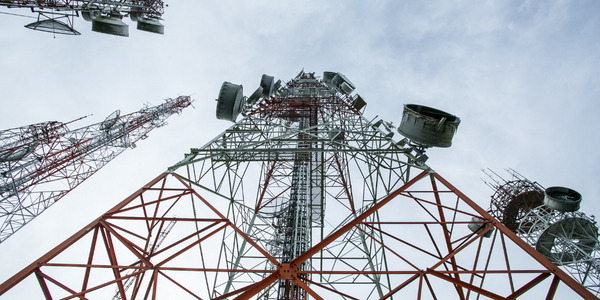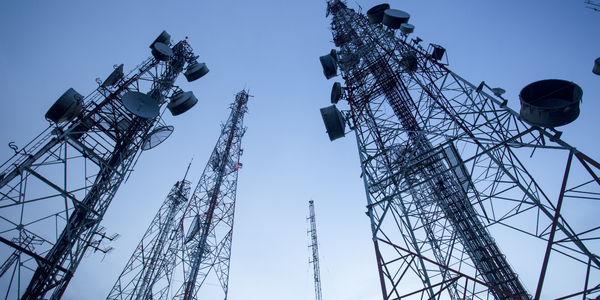A10 Secures and Optimizes Application Delivery for Mobile TeleSystems India
Customer Company Size
Large Corporate
Region
- Asia
Country
- India
Product
- A10 Thunder ADC
- A10 Networks aFleX
- A10 Networks aGalaxy
Tech Stack
- SSL hardware acceleration
- L4-L7 load balancing
- Web Application Firewall (WAF)
- Deep Packet Inspection Scripting Technology
Implementation Scale
- Enterprise-wide Deployment
Impact Metrics
- Cost Savings
- Productivity Improvements
- Customer Satisfaction
- Digital Expertise
Technology Category
- Functional Applications - Remote Monitoring & Control Systems
- Cybersecurity & Privacy - Application Security
- Networks & Connectivity - Network Management & Analysis Software
Applicable Industries
- Telecommunications
Applicable Functions
- Business Operation
- Quality Assurance
Use Cases
- Remote Control
- Cybersecurity
- Remote Asset Management
Services
- System Integration
- Software Design & Engineering Services
About The Customer
Sistema Shyam TeleServices Limited (SSTL) provides wireless telecommunication services under the MTS brand in India. Its products and services include voice and data, prepaid mobile broadband, high-speed data services on national highways, Wi-Fi, SMS services, auto-renewal based subscription service, live TV, video on demand service, SMS portal, caller tunes, voice portal, and entertainment. In India, MTS has over 10 million wireless subscribers and operates across 9 telecom circles, covering more than 60% of the data user footprint in India. SSTL is a joint venture between Sistema Joint Stock Financial Corporation of Russia (“SISTEMA JSFC”), the Russian Federation, and the Shyam Group of India, with over 1,500 employees currently working in the organization. The company’s objective is to leverage the advancements in Information and Communication Technologies (ICT) to contribute towards progressive socioeconomic change, especially in the fields of healthcare and education.
The Challenge
MTS’s network is currently used by employees, dealers, vendors, and partners. Applications are hosted at the company’s data center using a standard hierarchical zone-based architecture, with virtual router forwarding segmented and configured into areas such as DMZ, production, and management. Applications are accessed through both an internal and public interface and load balancing is done via multi-availability zones. Web applications used include IIS and Apache over Linux, and physical machines deployed include HP Superdome servers, Oracle Exadata/Big Data, and VMware hypervisor to optimize hardware resources. According to SSTL IT Infrastructure Planning team, there are approximately 1,500 concurrent sessions for CRM hosted in the data center alone, in addition to around eight other services including value-added service (VAS), NESS Application Portal (NAP) process, and web recharge. Key challenges faced include slow page response time and the vulnerability of applications to external attacks. “We needed the applications’ availability and performance to be up to mark and to meet security compliance standards,” the team mentions.
The Solution
MTS selected A10 Networks Thunder ADC line of Application Delivery Controllers with advanced SSL hardware acceleration for its data centers in Noida and Chennai. Four Thunder ADC appliances were deployed to load balance multi-application servers and utilize features including L4-L7 load balancing, web acceleration via web caching, compression, connection reuse, A10 Networks aFleX® Deep Packet Inspection Scripting Technology, access lists, session capturing, and Web Application Firewall (WAF). By enabling web acceleration and L7 feature deployment, MTS was able to see their website response was incredibly enhanced. Application performance increased significantly with a faster response time. The Web Application Firewall was effective and eliminated vulnerabilities to their applications. Another benefit from using the Thunder ADC was the ability to leverage features such as WAF and aFleX TCL scripting. This enabled MTS to consolidate multiple load balancers into fewer pairs. Applications previously hosted behind Radware, Cisco ACE, and other appliances were migrated to the A10 Thunder ADC appliances. The migration from other ADCs to A10 was easy and configuration took very little time. Application Delivery Partitions (ADPs) is a unique feature that MTS is now using. ADPs have great flexibility and are used, for example, for resource allocation, scale, and role-based access control.
Operational Impact
Quantitative Benefit

Case Study missing?
Start adding your own!
Register with your work email and create a new case study profile for your business.
Related Case Studies.

Case Study
Vodafone Hosted On AWS
Vodafone found that traffic for the applications peak during the four-month period when the international cricket season is at its height in Australia. During the 2011/2012 cricket season, 700,000 consumers downloaded the Cricket Live Australia application. Vodafone needed to be able to meet customer demand, but didn’t want to invest in additional resources that would be underutilized during cricket’s off-season.

Case Study
SKT, Construction of Smart Office Environment
SK T-Tower is the headquarters of SK Telecom. Inside the building, different types of mobile devices, such as laptops, smartphones and tablets, are in use, and with the increase in WLAN traffic and the use of quality multimedia data, the volume of wireless data sees an explosive growth. Users want limitless Internet access in various places in addition to designated areas.






